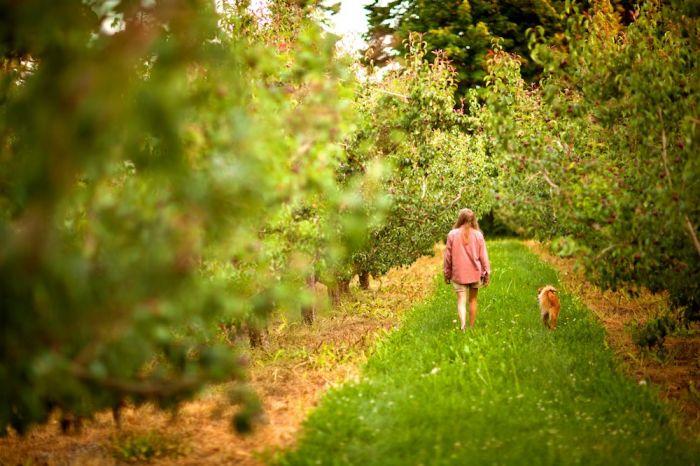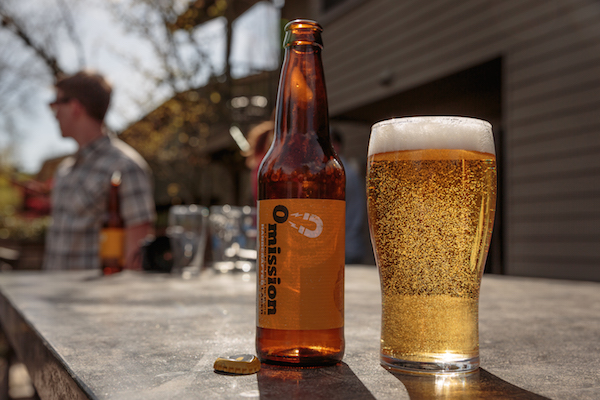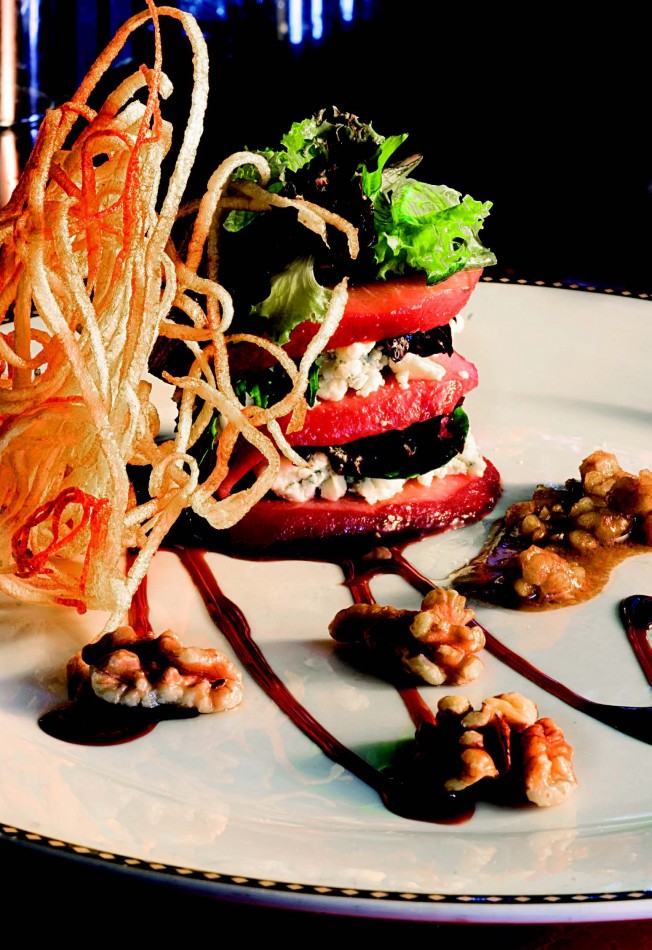The humble Oregon pear rarely gets its due. The subtle fruit is often overshadowed by the flashy berry or its more popular cousin, the apple. Since pears come late in the growing season, they may get ignored by canners vying for that last box of tomatoes or kids stampeding for the pumpkin patch.
Nevertheless, the pear is a quintessential Oregon crop. In fact, it was declared the official state fruit in 2005. Nearly 85 percent of the pears eaten in the United States are grown in the Pacific Northwest, and Oregon’s Hood River and Rogue Valley regions are major contributors to that harvest.
Valley Crest Orchards, twenty miles south of Hood River in the small town of Parkdale, presents a modest profile reminiscent of its principal crop. There’s not even a sign out front. Owner, Jennifer Euwer, rides around the property in an unassuming pick-up truck, her dog, Molly, sitting shotgun, and her rain gear nearby.
Euwer’s family has been on this property for one hundred years, growing fruit all along. When her grandfather arrived in 1912, he built a log cabin with lumber from the property, planting apples in place of the felled trees. After his death in 1942, Euwer’s grandmother took over the farm and ran it until her son, Eugene, came of age.
Eugene carried on the family tradition until 2001, when Euwer took over day-to-day management of the property. Running a 120-acre orchard wasn’t always in her plans. Euwer earned a bachelor’s degree in economics from Stanford University, with an emphasis in the food industry. She flirted with the idea of going to law school but didn’t want to commit to anything until she gave the family farm a shot. Living in a small home not far from the tiny log cabin that once housed her grandparents, Euwer has been back on the farm ever since.
Most farmers in the area planted apples in the early twentieth century, Euwer says, but the region’s hard frosts often killed off the crop. Growers then switched to pears because the trees are hardier and the market is more exclusive.
“If you look at any pear-growing region, you’ll notice a snowy mountain peak nearby,” says Cristie Mather, director of communications for Pear Bureau Northwest. Hood River, sitting at the base of Mt. Hood, has rich volcanic soil, plenty of water for irrigation and an ideal climate for producing pears. Green and red-skinned Anjous do particularly well here, but Valley Crest also produces Bartlett, Bosc, Comice and Star Crimson pears.
Like many tree fruits, pears do not cross-pollinate, so it’s essential to plant different varieties together. The color of the fruit’s skin determines the color of the tree’s leaves, and the result is a patchwork of green and red foliage rolling across the hillsides of Euwer’s property. She looks out over acres of specimens she planted with her father, as well as a small patch of thicktrunked trees put in the ground by her grandfather. The latter are nearly one hundred years old, but they still produce pears.
Just as these trees are part of her family legacy, so too are the orchard’s workers. Some of Euwer’s employees had parents or other family members who worked alongside her father.
North in Hood River, Chef Kathy Watson, chef and owner of Nora’s Table, loves dishes with pears. Nora’s Table specializes in “classy, world-wise food” mostly from local orchards, farms and ranches. One of Watson’s favorite ways to use pears is in a curried pear gastrique, which she serves over lamb chops with a side of yellow coconut dahl.
“Get to know the different pear varieties,” Watson advises. “Each one works particularly well for certain things.” She likes the Anjou best for poaching pear, the Comice for eating plain, Seckel pears with roasted meats and the Red Star Crimson alongside cheese.
There are many ways to use pears in desserts—from upside down cake to pear and hazelnut pie, says Heidi Tunnell, chef proprietor of Heidi Tunnell Catering Company in Creswell. In savory applications such as roasted fall vegetables, she adds, pears are perhaps at their best. “They add a nice sweetness,” says Tunnell, who recommends a savory roasted pear and pancetta soup to showcase the fruit. She occasionally serves the dish at her popular summer barn dinners or her Thursday night family-style meals.
On the sweet side, try tarragon panna cotta with pear caramel. Pears and caramel are a natural pairing, and tarragon is a mystery ingredient that will leave people guessing. The recipe comes from chef Scott Dolich, owner of Park Kitchen and The Bent Brick in Portland, both of which are dedicated to using the highest quality local ingredients at the peak of their season. “Be sure to choose a firmer pear for cooking, but don’t be timid,” Dolich says. “Pears can be treated in the same manner as apples. They can be baked, stewed, puréed, grilled and roasted.”
In the orchard, pears differ from apples. They should be picked before they’re fully ripe, when the body gives just slightly when squeezed, then stored in a cool place for a month and ripened at room temperature. When the neck of the pear feels soft, it’s ready for eating, canning or cooking. “I like to cook, and I love to feed people,” Euwer says. Her favorite way to eat pears is in pie, but a green salad is a close second. She cuts a couple pears into chunks and soaks them in rice vinegar, which prevents them from browning. She tosses together a combination of lettuce, bleu cheese, hazelnuts and dried cranberries, and dresses the salad with the pears, vinegar, and olive oil right before serving.
When she craves an unadorned pear, Euwer reaches for a Bartlett. It may not be the most celebrated variety in the vanity fair of pears, but sometimes the simple choice is the best one.
Fall Fruit in a Can
The words, “canned fruit” may bring back childhood memories of mushy, overly sweet imitations of the sunripened fruit found fresh in orchards every fall.
Bite into a Hood-Crest canned pear and you may change your mind. Muirhead Canning, the craft cannery that makes the Hood-Crest line, produces food the old-fashioned way: in small batches, using steam rather than chemicals to loosen the fruit’s skins, even doing some of the work by hand. The result is canned fruit that closely resembles its original form.
Muirhead Canning was founded in The Dalles in 1946 as a custom cannery. Farmers brought in fruit from their orchards, and the company canned it for them. Today Muirhead is one of the few remaining canneries in Oregon and the only one that still does custom canning.
Hood-Crest’s cherries come from just down the road, and the pears come from nearby Hood River. Its peaches and plums come from Oregon and Washington. Only the apricots, which Loughmiller sources from Northern California, aren’t grown in the Pacific Northwest.







